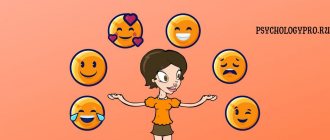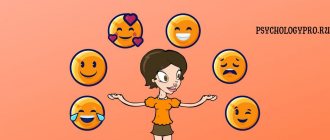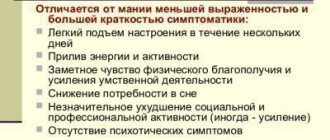In one of his works, the famous Roman thinker and wise emperor Marcus Aurelius wrote that people exist for people! Some will agree with this statement, while others will say that man is a self-centered creature. It doesn't matter whether you belong to the first or second category of people. The important thing is that we all have to live in society and constantly interact with the people around us!
Both everyone's favorites, who love to be in the center of events, and hermits, who want to stay as far as possible from people and isolate themselves from the whole noisy and bustling world, must be able to build relationships with other people as effectively as possible, otherwise their existence will turn into sheer torture!
A person who does not have sufficiently developed social intelligence very often does not behave quite adequately in society, and therefore, in the eyes of other people, he looks like some kind of narrow-minded individual who does not deserve respect. In order not to become a person who does not know how to find a common language with other people, because he constantly jokes out of place, tells boring and situationally inappropriate jokes, laughs when he should remain silent, etc., it is necessary to systematically work on developing one’s own social intelligence!
What is social intelligence? What levels, types and disorders of social intelligence exist? Is it possible to improve your social intelligence? In this article we will discuss these important issues and consider the most effective and popular ways to develop social intelligence!
Description
This term denotes a set of talents and skills with the help of which an individual manages to become successful when interacting with other people and to find his place in the world. It includes 3 main skills:
- The ability to accurately understand the behavior of others, the reasons for a particular step.
- The ability to be aware of my own actions (why am I behaving this way, what goal am I pursuing, can I achieve the desired result).
- The ability to act according to a specific situation, taking into account all its features and nuances.
In many ways, this skill overlaps with the so-called emotional intelligence, which allows you to correctly identify and evaluate the feelings of others. The simultaneous development of these two abilities at once is guaranteed to increase the effectiveness of interaction, but if innate talent is extremely important for emotional intelligence, then social is perfectly trainable.
Components
Important. All people do something, counting on the success of the activity; this largely determines the meaning and amount of effort expended. All actions in society depend on other people with whom interaction is necessary when moving towards achieving a goal.
This is what SQ is for, since problem solving is based on understanding human behavior and the ability to influence it.
Several groups of abilities that make up social intelligence have been identified:
- educational;
- emotional;
- behavioral.
They, in turn, also include several components:
- Cognitive. These are knowledge, memory, intuition, forecasting:
- Social knowledge. Knowledge about people, rules of communication, effective interaction.
- Social memory. Remembering names, events, faces, and what people did and said.
- Social intuition. Unconscious understanding of feelings, moods, motives and all other aspects of people's behavior.
- Social forecasting. Conscious prediction of everything related to human behavior.
- Emotional. These are expressiveness, empathy, self-regulation:
- Social expressiveness. We are talking about the degree and methods of manifestation of emotions and feelings, emotional sensitivity.
- Empathy. The ability to empathize, the ability to put oneself in the place of another.
- The ability to self-regulate. The ability to self-control and regulate emotions.
- Behavioral. This is perception, interaction, adaptation:
- Social perception. The ability to hear, see, feel and recognize other manifestations of behavior.
- Social interaction. Varying degrees of ability to communicate with people in society.
- Social adaptation. The skill or gift to adapt to circumstances and people.
Approaches to definition
Everyone defines the nature of the emergence of skills differently. I will note three main settings:
- Social intelligence is one of the cognitive abilities of a person, ranking alongside mathematical talents or the ability to quickly master foreign languages. In this case, it can be considered congenital.
- Social intelligence is more of an acquired experience; absolutely every person can achieve it with some training, regardless of initial knowledge.
- This is a certain personality and character trait that initially either exists in an individual or is absent in him.
Thorndike introduced the term social intelligence back in 1920, in which several psychological schools were actively developing - behaviorist, Soviet, psychoanalytic. Each of the three approaches listed is valid and should be used as a basis for the development of knowledge.
Age characteristics
With age, it does not undergo significant changes, unlike the general one, but at the initial stage of life (childhood, adolescence) they are significant:
- In childhood, SQ develops through observation of the environment, adults with developed social intelligence, as well as during games and when communicating with peers.
- During adolescence , the communication aspect, the ability to understand oneself and others, forecasting, etc. develop most actively.
- In adults, the development of social intelligence is enriched by experience and takes the form of wisdom.
Read about age-related changes, gender differences, and the impact on the competence of judgments here.
Historical reference
The history of social intelligence research began in the early 20th century, when Edward Thorndike first coined this term to define a person's ability to achieve success and effectiveness when interacting with other people in a variety of situations. Somewhat later, his idea was picked up by the Briton Philip Vernon. He expanded the concept to conclude that individuals have a responsibility to get along with each other.
In 1937, American psychologist Gordon Allport, based on the judgments of his colleagues, defined social intelligence as the ability to quickly and clearly judge the people around him and predict their likely behavior. In contrast, Auguste Comte and Hans Eysenck believed in the social nature of the phenomenon, considering it the individual’s adaptation to life in society.
The first attempt to measure the level of mental processes was made by the American psychologist Joy Gilford. He developed a test that is still used today. We will talk about it in detail a little later, as well as about the Eysenck model, which also became very popular.
Models of its structure and types
There are several approaches to the interpretation of social intelligence, which has given rise to several models of its structure:
- G. Eysenck.
- D. Guilford.
- G. Allport.
- F. Vernon.
- O.Konta.
- R. Sternberger.
- Yu. Emelyanova.
- V. Kunitsyna.
- F. Yuzhaninova.
The most common are several models, which will be discussed in more detail below.
Attention. SQ itself, in turn, is one of the types of general intelligence; it is knowledge and skills acquired in the process of socialization in combination with genetically determined abilities. This is a personality trait on which success in interpersonal interaction depends.
According to G. Eysenck
He believed that this type of intelligence is social in nature. It is formed during the socialization of a person. In his opinion, social intelligence can be distinguished as something separate that is based on biological and psychometric intelligence:
- The first is the entire set of innate abilities that allow one to act on the basis of received information in society. This is a basic aspect of social intelligence.
- The second acts as a link between the biological and the social. The main parameter influencing the level of this type of intelligence is the speed of information processing.
According to J. Guilford
D. Guilford understood SQ as a set of intellectual abilities associated with the knowledge of behavioral information. His model of intelligence contains three dozen abilities related to social intelligence. This is, first of all, understanding behavior, productive thinking in this direction and assessment. He emphasizes the importance of recognizing non-verbal language.
Important. D Guilford first approached the problem from a measurement point of view, developing a test to determine the level of intelligence.
Unlike Eysenck, he believed that SQ does not depend too much on general intelligence, but is related to the ability to work with behavioral information, which includes six aspects:
- ability to understand verbal and non-verbal behavior;
- recognize what is important in the flow of information;
- understand relationships, the logic of the development of situations, the meaning of people’s behavior.
According to G. Gardner
He proposed a structure of multiple intelligences that are directly related to social intelligence.
In his opinion, it is based on different abilities and skills suitable for survival in society.
Different people have different intellectual abilities in different combinations, and social intelligence acts as the ability to solve problems in society.
According to Gardner, there are several types of intelligence, and one does not depend on the other; they work in the brain and as independent modules:
- linguistic;
- musical;
- mathematical;
- verbal;
- kinesthetic;
- spatial;
- personal.
The latter, in turn, is divided into:
- intrapersonal (the ability to recognize one’s feelings, motives, etc.);
- interpersonal (the ability to recognize everything related to the behavior of other people).
Science psychology
Like any other talents and skills, mental performance can be measured using tests. At the same time, mental indicators are recorded from the point of view of the development of various abilities, the main ones among which are:
- The ability to recognize the internal state of another person.
- Interpret the connection between it and behavior.
- React flexibly to changes.
- Predict options for the development of the situation.
- Behave in accordance with the information received and processed.
An individual who has intellectual qualities can determine the desires, needs and emotions of his interlocutor and structure his own behavior so that his partner feels comfortable. As a result, an effective communication model is formed and better results are achieved.
Psychologist Daria Milai
Make an appointment
Functions
- Communication-value is associated with the ability to communicate, understand (not only others, but also oneself), and assimilate the norms of relationships.
- Cognitive-evaluative is the ability to achieve a goal with the help of received information through cognition and assessment of situations and people's behavior.
- Reflective-corrective ensures making changes in the interaction process in order to obtain the desired result, helps to understand the perception of others.
Levels of social intelligence
The ability to understand the people around you can be developed, and for some it is easier and faster due to their innate talents, while for others it requires a lot of effort. At the same time, skill can be measured using several techniques. Main degrees of development:
- Low social intelligence – suggests that a person does not know how to effectively interact with the world around him. His behavior can be called inadequate, and his attractiveness in the eyes of other individuals is seriously reduced.
- Average - means that in most situations a person is able to understand his interlocutor and adjust his behavior to his needs, with rare exceptions - when it is necessary to find a common language with someone who does not reciprocate.
- High - assumes that an individual can establish contact with absolutely any partner, but no more than 11% of all people on Earth have such skills.
In any case, you can develop your abilities, although you will have to make a lot of effort.
Techniques
I will list the main ways of developing and measuring mental activity within the framework of the most popular psychological concepts.
G. Eysenck's model of the structure of intelligence
This British psychologist suggested that any person has three different types of intellectual formation, which determine his skills. This is about:
- Biological, that is, innate information processing skills. They originate directly in the structures of the brain and form the basis of all knowledge that will be acquired by an individual in the course of life.
- Psychometric, that is, the very indicators that are measured using tests.
- Social – formed during socialization, developing gradually and largely determined by the environment and people.
Intellectual abilities can simultaneously include the development of cognitive processes such as memory, attention, the ability to reason, adapt, and interact.
J. Guilford's model of the structure of intelligence
This concept is more complex. The intellectual manifestations of an individual are represented in it in the form of a cube consisting of many small cubes. This model includes more than 100 factors that determine the degree of development of a person's skills, but they are all based on three variables that help determine how information is processed:
- Data content.
- Mental actions.
- Results.
It is important to note that among all the “cubes” identified by the technique, mental activity lies in only one small column - the ability to cognize and understand behavior. This little piece reveals 6 separate factors:
- The ability to highlight verbal and non-verbal information from an interlocutor.
- Perceive something common in the entire data stream.
- Understand relationships.
- See the logic of the development of situations.
- Notice changes.
- Predict possible consequences.
It is these factors that are measured using test methods and ultimately determine the final level of development of social intelligence, which you can find out if you take the online Guilford test.
Interpretation of results
When interpreting the results, it is necessary to remember that the success of the test is positively correlated with the speed of thinking, the educational level of the subject and does not depend on his gender.
Interpretation of individual subtests
After completion of the results processing procedure, standard scores are obtained for each subtest, reflecting the level of development of the corresponding abilities for cognitive behavior. In this case, the general meaning of standard scores can be defined as follows:
- 1 point – low ability to cognition of behavior;
- 2 points – behavioral cognition abilities below average (moderately weak);
- 3 points—average ability to cognition of behavior (average sample norm);
- 4 points—behavioral cognition abilities are above average (medium-strong);
- 5 points - high ability to cognition of behavior.
When receiving a standard score of 1 point on any subtest, you must first check whether the subject understood the instructions correctly.
Subtest No. 1 - “Stories with completion”
Persons with tall
Using subtest scores, they are able to predict the consequences of behavior. They are able to anticipate people’s future actions based on an analysis of real communication situations (family, business, friendly), and predict events based on an understanding of the feelings, thoughts, and intentions of the participants in communication. Their predictions may turn out to be wrong if they deal with people who behave in the most unexpected, atypical ways. Such people know how to clearly build a strategy for their own behavior to achieve their goal. Successful completion of the subtest presupposes the ability to navigate the nonverbal reactions of interaction participants and knowledge of normative role models and rules governing people's behavior.
Persons with short
Subtest scores provide poor insight into the relationship between behavior and its consequences. Such people can often make mistakes (including illegal actions), find themselves in conflict, and possibly dangerous situations because they incorrectly imagine the results of their actions or the actions of others. They are poorly versed in generally accepted norms and rules of behavior.
The success of this subtest is positively correlated with the following psychological characteristics:
- the ability to fully and accurately describe the personality of a stranger from a photograph;
- ability to decipher non-verbal messages;
- differentiation of the self-concept, saturation of the self-image with an understanding of intellectual, volitional characteristics, as well as a description of the characteristics of the spiritual organization of the individual.
Subtest No. 2 - “Expression groups”
Persons with tall
With scores on the subtest, they are able to correctly assess the states, feelings, and intentions of people based on their nonverbal manifestations, facial expressions, postures, and gestures. Such people most likely attach great importance to nonverbal communication and pay a lot of attention to the nonverbal reactions of communication participants. Sensitivity to nonverbal expression greatly enhances the ability to understand others. The ability to read the nonverbal signals of another person, be aware of them and compare them with verbal ones, according to A. Pease, underlies the “sixth sense” - intuition. There are widely known studies in psychology that prove the great importance of nonverbal means of communication. Thus, R. Bedswill discovered that in a conversation verbal communication takes up less than 35%, and more than 65% of information is transmitted non-verbally.
Persons with short
scores on the subtest have poor command of the language of body movements, glances and gestures, which is mastered earlier in ontogenesis and inspires more confidence than verbal language). In communication, such people are more focused on the verbal content of messages. And they may be mistaken in understanding the meaning of the interlocutor’s words because they do not take into account (or incorrectly take into account) the nonverbal reactions accompanying them.
Success in completing the subtest is positively correlated with:
- with accuracy, completeness, non-stereotyping and plasticity when describing the personality of a stranger from a photograph;
- with sensitivity to the emotional states of others in business communication situations;
- with a variety of expressive repertoire in communication;
- with openness and friendliness in communication;
- with emotional stability;
- with sensitivity to feedback in communication, receptivity to criticism, conscientiousness;
- with high self-esteem and a degree of self-acceptance;
- with the saturation of the self-image with a description of the volitional characteristics of the personality, activity, sthenicity;
- with depth of reflection;
- with an accurate understanding of how a person’s own emotional state is perceived by his communication partners, which is an indicator of the congruence of communicative behavior, a prerequisite for successful self-presentation;
- with empathy, with non-verbal sensitivity.
Subtest No. 3 - “Verbal Expression”
Persons with tall
scores on the subtest are highly sensitive to the nature and nuances of human relationships, which helps them quickly and correctly understand what people say to each other (verbal expression) in the context of a certain situation, specific relationships. Such people are able to find the appropriate tone of communication with different interlocutors in different situations and have a large repertoire of role behavior (that is, they exhibit role plasticity).
Persons with short
scores on the subtest poorly recognize the different meanings that the same verbal messages can take, depending on the nature of the relationships between people and the context of the communication situation. Such people often “speak out of place” and make mistakes in interpreting the words of their interlocutor.
The success of the subtest also positively correlates with the accuracy of describing the personality of a stranger from a photograph, the saturation of the self-image with a description of spiritual values, and the empathy scale.
Subtest No. 4 - “Stories with additions”
Persons with tall
scores on the subtest are able to recognize the structure of interpersonal situations in dynamics. They are able to analyze complex situations of interaction between people, understand the logic of their development, feel the change in the meaning of the situation when various participants are included in the communication. Through logical conclusions, they can complete the unknown, missing links in the chain of these interactions, predict how a person will behave in the future, and find the reasons for certain behavior. For example, the subtest allows one to predict the success of an investigator in constructing a holistic picture of a crime based on incomplete data. Successful completion of the subtest presupposes the ability to adequately reflect the goals, intentions, and needs of communication participants, and predict the consequences of their behavior. In addition, it requires the ability to navigate a person’s non-verbal reactions, as well as the norms and rules governing behavior in society.
Persons with short
scores on the subtest, they experience difficulties in analyzing situations of interpersonal interaction and, as a result, poorly adapt to various types of relationships between people (family, business, friendship, etc.).
The subtest is the most comprehensive and informative in terms of overall factor weight in the structure of social intelligence.
The success of the subtest is positively correlated with the accuracy, completeness, differentiation and flexibility of describing a stranger from a photograph, with the differentiation of self-concept, depth of reflection, with self-acceptance, self-esteem, with interest in social problems, social activity, and with exam success.
Interpretation of the Composite Social Intelligence Assessment
The general level of development of social intelligence (an integral factor of cognitive behavior) is determined on the basis of a composite assessment. The meaning of a composite score expressed in standard scores can be defined as follows:
- 1 point - low social intelligence;
- 2 points - social intelligence below average (moderately weak);
- 3 points - average social intelligence (average sample norm);
- 4 points - above average social intelligence (medium strong);
- 5 points – high social intelligence.
Social intelligence is a system of intellectual abilities that determine the adequacy of understanding people's behavior. According to the authors of the methodology, the abilities reflected at the level of the composite assessment “probably overlap the traditional concepts of social sensitivity, empathy, perception of others and what can be called social intuition.” Performing a regulatory function in interpersonal communication, social intelligence ensures social adaptation of the individual, “smoothness in relationships with people.”
Persons with tall
social intelligence are able to extract maximum information about people’s behavior, understand the language of non-verbal communication, make quick and accurate judgments about people, successfully predict their reactions in given circumstances, and show foresight in relationships with others, which contributes to their successful social adaptation.
Individuals with high social intelligence tend to be successful communicators. They are characterized by contact, openness, tact, goodwill and cordiality, and a tendency towards psychological closeness in communication.
High social intelligence is associated with an interest in social problems, a need to influence others, and is often combined with developed organizational skills. People with developed social intelligence usually have a strong interest in self-knowledge and a developed ability to reflect.
The level of development of social intelligence to a greater extent determines the success of adaptation when entering a job than the level of development of general intelligence. People with high social intelligence usually get along easily in a team, contribute to maintaining an optimal psychological climate, and show more interest, ingenuity and ingenuity in their work.
Persons with low
social intelligence may have difficulty understanding and predicting people's behavior, which complicates relationships and reduces the possibility of social adaptation.
A low level of social intelligence can be compensated to a certain extent by other psychological characteristics (for example, developed empathy, certain character traits, communication style, communication skills), and can also be corrected during active socio-psychological training.
Research from domestic psychologists
Margarita Bobneva was the first to describe the term when she studied the formation of personality as a part of society in 1979. She believed that the impetus for the emergence of skills is the socialization that every individual living in human society undergoes.
Face-to-face consultation
What are the features and advantages of face-to-face consultation?
Find out more
Skype consultation
What are the features and benefits of Skype consultations?
Find out more
Another famous psychologist, Yuri Emelyanov, explored the concept within the framework of the psychology of practical activity. He believed that in order to develop communication abilities, it is necessary to actively learn, and this process should last constantly and continuously.
Alla Yuzhaninova went further in her research and came to the conclusion that social intelligence is just part of the intellectual structure, which also includes practice and logic. To improve your communication skills, you need to train all 3 areas.
Diagnosis of social intelligence
The interest of specialists in studying the relationships of society led to the fact that already in 1928 the first multifactor test was prepared, designed to determine the level of mental development of a particular individual. Its author was T. Khan. The technique evaluates several components:
- Judgments when participating in any situation.
- Memory.
- Ability to observe behavior.
- Recognition of internal states.
The method will determine whether a person knows how to interact with others and how effective this interaction is. However, the test did not become popular, but provided the necessary basis for the preparation of another research method, much more well-known and accurate. We'll talk about it a little later.
Methodology for identifying social intelligence from Guilford
It was this testing that quickly gained approval from other specialists involved in the study of communication abilities. It is still used today as the main method of work.
Ask a question
The measurement is carried out using 4 separate subtests, 3 of which are performed using non-verbal material. The purpose of testing is to determine whether an individual has special skills:
- Knowledge of classes and systems.
- Transformation of information.
- Behavioral results.
You can get tested as early as 9 years of age. At the same time, the time to solve all the proposed problems is limited. In our country, it is not the original, but an adapted technique that is used. It was prepared by E.S. Mikhailova, based not only on the work of the author, but also on the peculiarities of our mentality.
Development
The ability to interact with other people is truly a key aspect for every person living in society. Without it, an individual is not able to study normally at school, get a profession, work, or start a family. Naturally, many are concerned with the question of how to improve skills if innate talents are not enough.
There really is a way, but it also affects other forms of intellectual activity, including emotional activity. Training should take place constantly and everywhere. In this case, it is fixed at the cognitive level and allows adaptation.
Constantly being in the company of other people, copying their behavior, trying to understand their feelings and emotions, a person begins to react more adequately to the situations happening around him and, in the end, gives exactly the reactions that are expected of him. His attractiveness in the eyes of society is growing.
How to develop social intelligence
In order to learn how to interact with others, you need to follow several rules. They cannot be called simple and easily digestible. On the contrary, some will require a lot of work, but will ultimately lead to the desired result. Here are the main principles:
- Learn to be more sensitive to other people. To do this, you need to constantly come into contact with them, observe them, try to understand them.
- Get to know the basics of nonverbal communication and read the emotions of others by their faces and gestures.
- Force yourself to hear what the other person is saying.
- Notice people's moods. This is difficult only at first glance, but in fact, even in childhood, a person’s mood was noted by random steps, a slightly stronger slam of the door and other factors.
- Sign up for acting classes. Interaction is a bit of a game, which is not for everyone.
- Record your own feelings and manage them.
- Be in public more often and don’t be shy about speaking.
- Get into the habit of playing board games - Mafia.
The younger a person is, the easier it is for him to learn to understand the behavior of others, so you should start working as early as possible.











